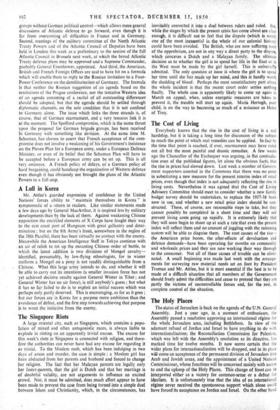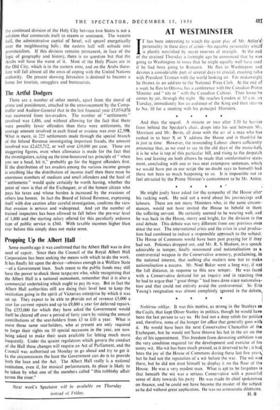The Holy Places
The status of Jerusalem is back on the agenda of the U.N. General Assembly. Just a year ago, in a moment of enthusiasm, the Assembly passed a resolution approving an international regime for the whole Jerusalem area, including Bethlehem. In view of the adamant refusal of Jordan and Israel to have anything to do with internationalisation; the Reconciliation Commission for Palestine, which was left with the Assembly's resolution as its directive, has marked time for twelve months. It now seems certain that the wider plans for internationalisation will be dropped, and in its place will come an acceptance of the permanent division of Jerusalem into Arab and Jewish areas, and the appointment of a United Nations Commissioner, whose functions will be concerned mainly with access to and the upkeep of the Holy Places. This change of front can be interpreted either as a victory for common-sense or a defeat for idealism. It is unfortunately true that the idea of an international regime never received the spontaneous support which alone could have forced its acceptance on Jordan and Israel. On the other hand
the continued division of the Holy City between two States is not a solution that commends itself to reason or sentiment. The western half, the administrative capital of Israel, will sprawl energetically over the neighbouring hills ; the eastern half will subside into provincialism. If this division remains permanent, in face of the logic of geography and history, there is no question but that the Arabs will have the worst of it. Most of the Holy Places are in the Old City, which is in the eastern zone, and on the Arabs there- fore will fall almost all the onus of coping with the United Nations authority. On present showing Jerusalem is destined to become a home for tourists, smugglers and bureaucrats.







































 Previous page
Previous page